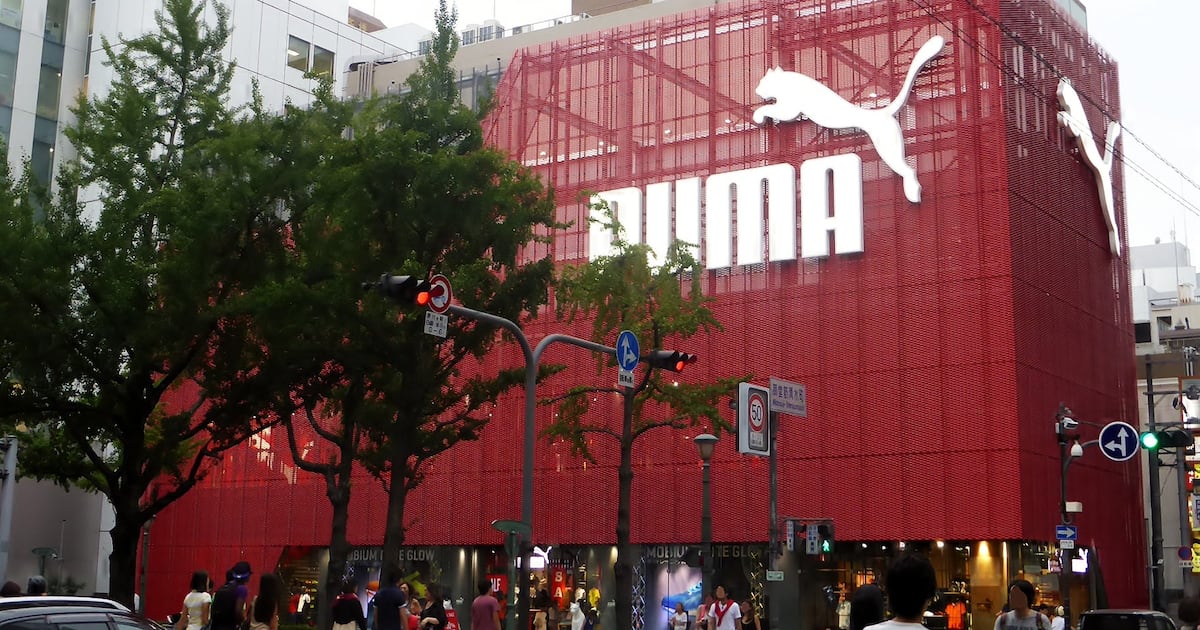Puma SE reported a stable first quarter in a boost for the German sportswear company, which is currently operating without a chief executive officer.
The sneaker brandâs adjusted earnings came in at â¬76 million ($86 million) before interest and taxes, according to a statement Thursday. Thatâs down from a year ago but slightly ahead of analyst estimates.
Puma also maintained its 2025 earnings targets while acknowledging that the outlook ignores the potential impacts of President Donald Trumpâs tariffs because thereâs so much uncertainty.
Shares rose as much as 7.8 percent in Frankfurt trading. The stock is down more than 40 percent so far this year.
The steady performance amounts to a bright spot for the German brand, which in April parted ways with its former CEO Arne Freundt following a disagreement with the supervisory board over the companyâs strategy. Puma is now waiting for Adidas veteran Arthur Hoeldâs arrival as boss in July.
Itâs a challenging time to be without a leader, with the sneaker industryâs exposure to Asia manufacturing putting it in the crosshairs of the US trade war. But Puma appears to be gaining some momentum with its retro Speedcat sneaker, which is key to the companyâs efforts to raise prices for its more fashionable footwear.
The brand still plans to sell between four and six million pairs of the thin-soled Speedcat and related models like the Ballet shoes this year, chief financial officer Markus Neubrand said on a call with reporters. Demand has been particularly strong for those in Asia and North America, while itâs been disappointing at some European retailers, he said.
While Puma only gets about 20 percent of its sales in the US, the brand has nonetheless seen resilient demand in the country despite concerns about recession and inflation. âTraffic was under pressure mostly in February, which was the worst month, and since then weâve seen an improvement to the traffic development in the US,â Neubrand said.
While many investors will welcome the companyâs decent start to the fiscal year, theyâll probably want to see how exactly Hoeld will adjust the strategy before changing their opinion about Puma, Piral Dadhania, an analyst at RBC Capital Markets, said in a note.
Puma performed slightly better than expected in the Europe, Middle East and Africa region while its performance suffered in North America and China, Dadhania noted.
In March, Puma disappointed investors with a gloomy trading update based on trade tariffs, currency swings and escalating geopolitical tensions. It also said adjusted earnings before interest and taxes would probably fall this year to between â¬520 million and â¬600 million, while currency-adjusted sales would only grow in the low- to mid-single-digit range.
The outlook raised doubts about whether Puma can achieve its target of an 8.5 percent EBIT margin by 2027, a goal it already pushed back by two years in January.
The brand has struggled to build on the momentum it generated during the nearly decade-long tenure of Bjorn Gulden, who left to become Adidasâs CEO in 2023. Freundt sought to deepen Pumaâs profile on higher-end sneakers and sports gear but never managed to roll out a product that captured the zeitgeist.
While some analysts applauded the decision to bring in Hoeld as the new CEO, they cautioned that it will take months for Puma to change its strategy and even longer for Hoeld to bring new products to market.
By Tim Loh
Learn more:
Puma Warns Tariffs, Geopolitical Tensions in 2025 Forecast
The German sportswear brand expects currency-adjusted sales to grow in the low- to mid-single-digit range, it said in a statement.

